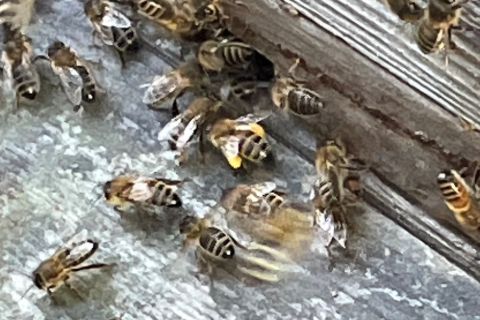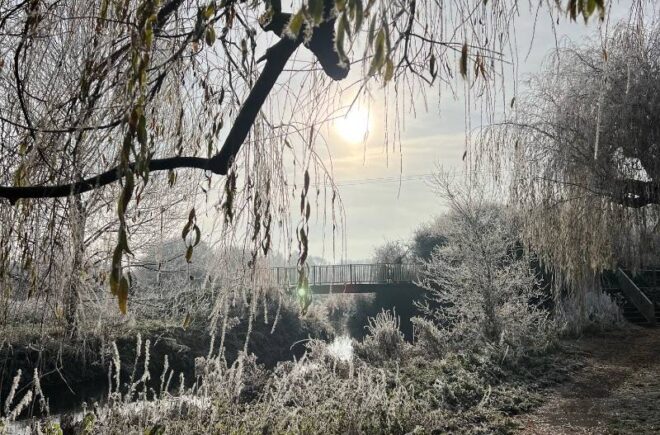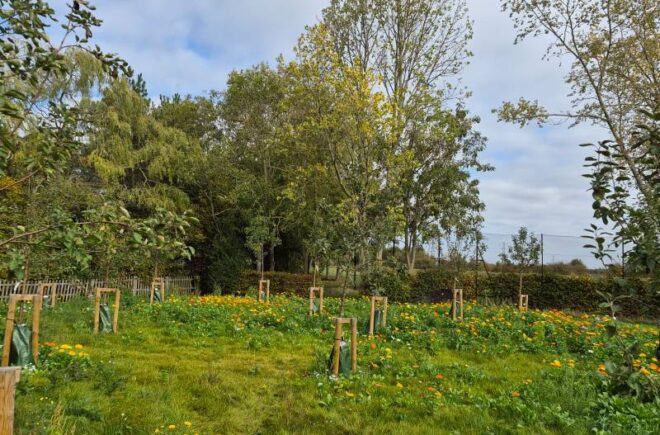
Winter, Bees ‘n’ Bits by Margaret, a Chelmsford Beekeeper
Happy New Year to you all!
For the next few months my honeybees should be cuddling up, in a ball in the hive. They need to eat stored honey to keep themselves and their queen warm, waiting for spring. However, in the photograph (taken on 1st January 2022) the worker bees were busy flying, generally cleaning up the hive. They often do this on mild winter days and, as it was 16 degrees, I was not surprised to see them out.
What did surprise me was that they were bringing home pollen! Pollen is the protein base for feed for larvae, so they must have young to feed in the hive. I had to think about where they found the pollen? I can only see winter flowering honeysuckle in the garden just now, so that must be the source. Bumble bees are also about on warm days; they can be out at much lower temperatures than honeybees. So, when you plan your garden, try to add in winter flowering shrubs for the hungry bees. If the winter stays warm, and they stay active, they may use up their stored honey and starve. For this reason, I put a packet of sugar fondant on top of the hive under their lid so, if they run out of honey, they have the extra food. Some years they eat it all, in other winters it is untouched.
The other thing I will be doing in the next week is treating my bees against varroa mites. These mites breed in pupating larva and are, to a bee, a football sized parasite. They can weaken colonies and lead to vulnerability to bee viruses; so, I will be dribbling an oxalic solution onto the bees – to reduce the varroa numbers. Hopefully my bees will be healthy and well-fed ready to start their busy honey making season, when spring flowers are in bloom for harvesting.


